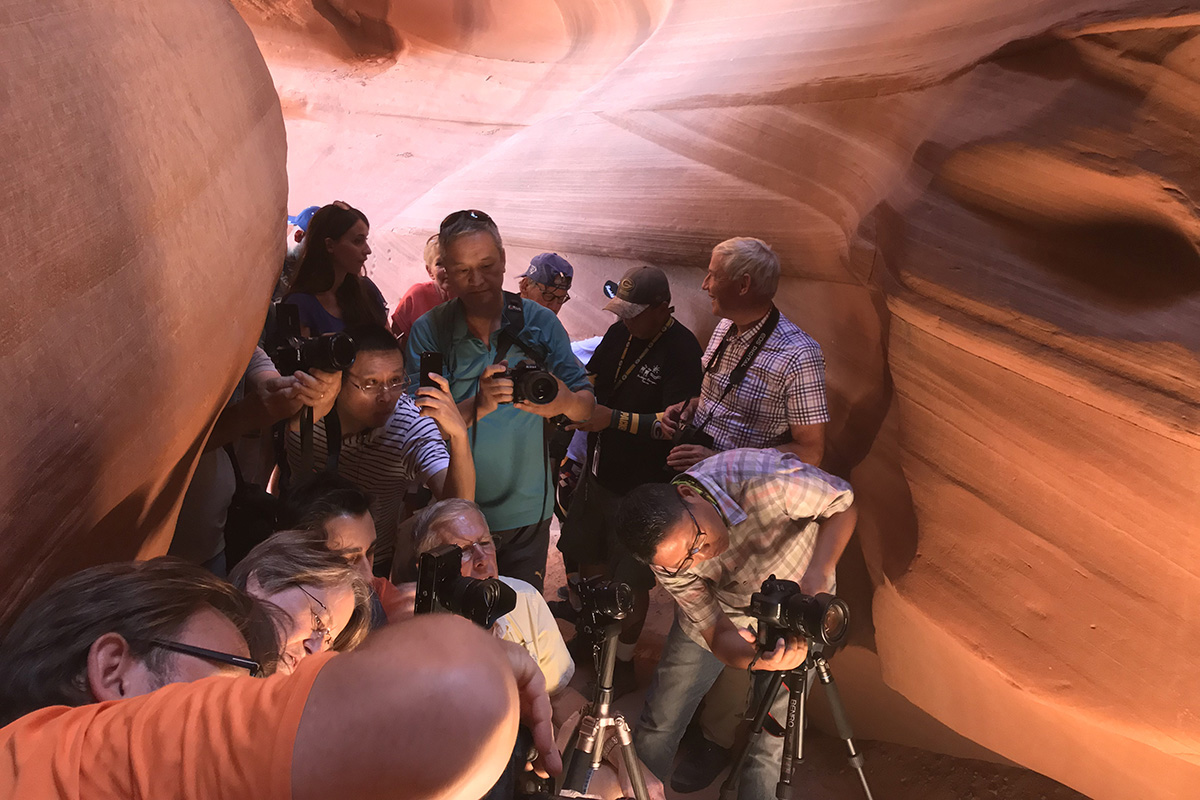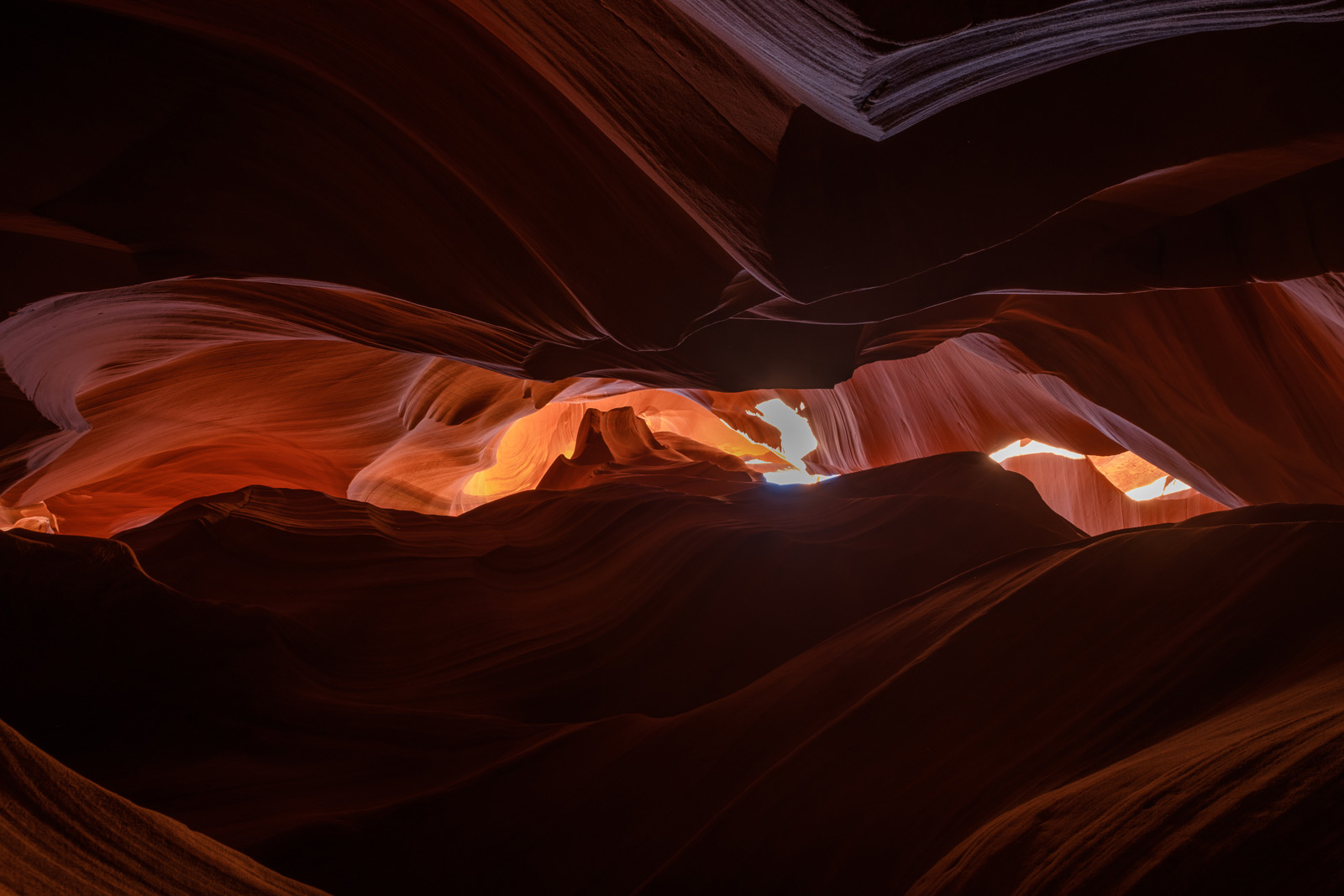Antelope canyon - the magic & the reality
If you're planning to visit Antelope Canyon like I did, there are a few important things to know before you go. First, you'll need to book a guided tour through a Navajo-run tour company – independent access isn’t allowed. Second, there are two types of tours: the standard (and cheaper) tour, where you're not allowed to bring tripods, bags, or much of anything really, and the Photography Tour. The latter is pricier – roughly double – but allows a smaller group of around 8 to 12 people, and you're free to bring tripods, camera bags, and whatever gear you can carry.
The reality is, if you want to get the shot – or even a half-decent frame without people in it – you’ll need to shell out for the Photography Tour.
Make sure you book
Booking is essential. I’d recommend securing your spot at least a week in advance. If you’re planning to go during peak season (the summer months), when those iconic light beams are most visible, you’ll need to book months ahead. I visited in late September, which marks the beginning of the off-peak season. While that meant fewer crowds, as you'll see from the photos – it was still very busy. I can’t imagine how packed it gets in the height of summer.
On the ride into the canyon – perched on the back of a trailer – I took in the mix of fellow photographers. There was a calm and collected older couple shooting with Sonys, a confident Canon shooter nonchalantly cradling his camera and tripod with his foot (yes, really), and others wielding various Canon and Sony setups. Then there was me – the lone Fuji guy.
After capturing our first shots, we were quickly ushered to the next location. This is where things took a turn. The experience felt increasingly rushed, with our guide telling us exactly where to point our cameras. “Quick, we don’t have much time! Get the shot – we’ve got to move!” he’d bark.
It felt chaotic. Several participants, flustered by the pressure, fumbled with their gear. At one point, the guide even took over someone's camera to help them get the shot. I managed fine thanks to the tactile dials of my X-Pro2 – it’s fantastic for quickly adjusting settings. That said, for the first time in a while, I found the ISO dial slightly frustrating. I made one mistake, leaving ISO too high for a few frames before realising.
Settings and approach
My general setup for the canyon was:
2-second timer
5-bracket exposure (⅓ stop intervals – though I’d recommend switching to 3 brackets at 1 stop instead)
f/8 or f/7.1
ISO 800
Auto white balance (since I was shooting in RAW)
It worked well for the most part, but I occasionally had to skip the last bracket or two due to the time pressure. The fourth or fifth shot would sometimes take too long, and the guide was already pushing us onward.
Stunning… But Draining
Honestly, I was relieved when it was over. Antelope Canyon is undeniably photogenic, but the overall experience left a sour taste. The rigid structure, rushed instructions, and sheer number of people really detract from the magic of the place.
Would I do it again? Probably not. But should you go? That’s a tough call. I went in knowing it wouldn’t be an ideal experience, but I still wanted to see it for myself – and I’m glad I did. For an amateur like me, it was worthwhile for the portfolio. But if you're a seasoned pro with a solid body of work, it might not be worth the frustration – especially since the canyon has been photographed to death, leaving little room for creative expression.
The Light Beam Moment
Walking through the narrow middle section of the canyon was intense – claustrophobic and chaotic, with barely any room to shoot. Eventually, our guide told us we might catch a light beam, so we rushed ahead. I was lucky enough to see the only light beams that day. They disappear quickly, so you’ve got to be in position and ready. On my second attempt, I nailed the shot – the beam lasted maybe three minutes. It truly was magical, even with the crowd jostling around me. Some others missed it entirely as they struggled with their gear.
After a few more orchestrated shots, we were out – and everyone, myself included, was visibly relieved. The experience was exhausting.
Room for Improvement
Honestly, the tour would be vastly better with fewer people – even if that meant raising the price. Other protected sites in Arizona use a lottery system to manage visitor numbers. That could work here too, although being on native land, it's a unique situation.
BUT WAIT THERE IS AN ALTERNATIVE…
The following day, I visited Horseshoe Canyon. While it wasn’t as visually striking as Antelope, the experience was far more enjoyable. I had the canyon entirely to myself for about 20 minutes. No rushing, no chaos – just the peace of taking it all in and shooting at my own pace.
I’ve also heard of other lesser-known canyons nearby, like Antelope X Canyon, which might offer a more relaxed experience. If you’re planning to visit, I’d encourage you to look into these alternatives – or at least brace yourself for the madness of the main Antelope Canyon.











